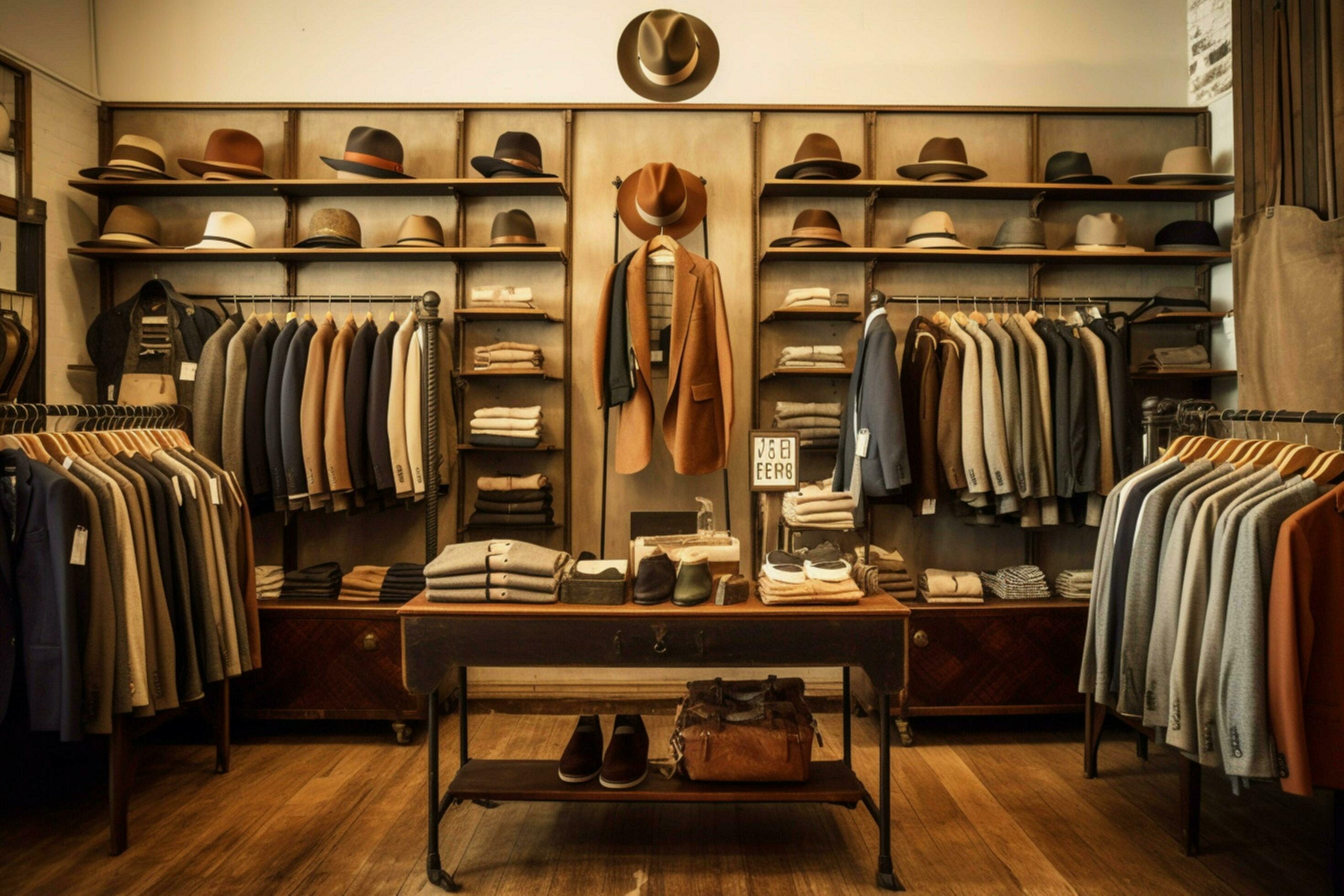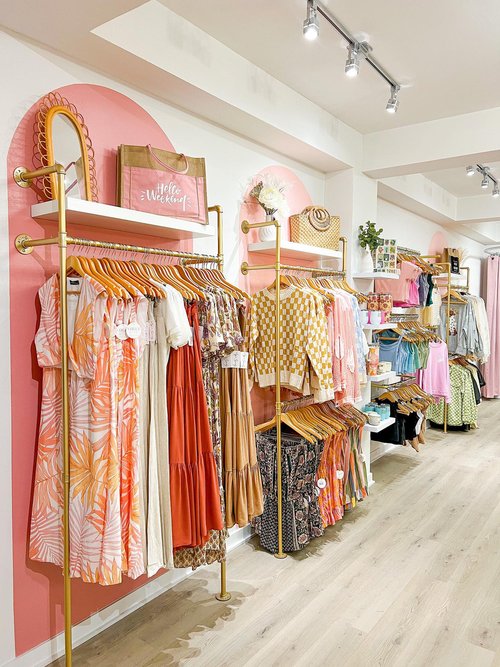Checking Out the Advancement and Impact of Clothes on Modern Style Trends
The evolution of clothes has actually dramatically influenced modern fashion fads, combining historic precedents with advanced advancements. Legendary figures like Coco Chanel and Yves Saint Laurent transformed the fashion business by presenting principles that focus on comfort and accessibility, which remain to resonate today. On the other hand, technical strides in locations such as 3D printing and clever fabrics are redefining layout opportunities and customer experiences. Furthermore, the growing emphasis on inclusivity and sustainability is reshaping market requirements. As we think about these diverse influences, one should doubt exactly how these aspects collectively redefine fashion's role in reflecting and forming modern society.
Historic Fashion Influencers
In the tapestry of fashion background, specific figures have left an enduring mark, shaping the trends and designs that define entire periods. Coco Chanel, an advanced designer, redefined women's style by introducing comfy, sophisticated clothes that departed from limiting corsets. Her legendary Chanel fit and little black dress have actually ended up being timeless staples in closets worldwide. Christian Dior's post-war "New Look" in 1947, with its celebration of feminineness through full skirts and cinched waistlines, marked a return to luxury and has proceeded to influence developers.
Elsa Schiaparelli is another essential figure, renowned for her avant-garde layouts that incorporated surrealist art, working together with Salvador Dalí to develop whimsical pieces that tested standard looks. Her innovative use shade and vibrant patterns reverberates in contemporary fashion. Yves Saint Laurent, at the same time, democratized haute couture with prêt-à-porter collections, bringing path designs to the masses and establishing a precedent for contemporary ready-to-wear lines.
These enthusiasts, to name a few, not just transformed fashion in their times however additionally established enduring trends that resonate in today's apparel industry, providing a foundation upon which contemporary developers remain to innovate and build. Their legacies highlight the value of creative thinking and bold in style's ever-evolving story.
Technical Advancements in Fashion
Amidst the dynamic landscape of the fashion business, technological developments stand at the leading edge of development, reshaping exactly how designers create and consumers engage with style. The assimilation of 3D printing has actually revolutionized design procedures, making it possible for developers to trying out intricate frameworks and sustainable materials that were previously impossible. This modern technology promotes fast prototyping, minimizing waste and accelerating production times.

Smart fabrics, embedding innovation right into materials, are additionally transforming the market. Technologies like self-cleaning and temperature-regulating textiles offer improved capability and comfort. Wearable innovation, including features like physical fitness monitoring and communication, adds a new measurement to style, combining aesthetics with functionality.
Social Changes and Design
As technical innovations continue to reshape the fashion industry, cultural shifts are equally influential, redefining style and consumer preferences. In recent years, the rise of social networks platforms has accelerated the dissemination of global fashion trends, allowing varied social impacts to exist side-by-side and assemble. This digital interconnectivity has helped with the rapid exchange of ideas, leading to a more comprehensive and eclectic interpretation of design that shows the complex nature of modern culture.
Social recognition and recognition have triggered designers to attract ideas from a wider spectrum of pop over here ethnic and historical contexts, incorporating conventional motifs with modern appearances. This blend has resulted in style that reverberates with a larger target market, advertising a sense of identification and belonging throughout different demographics. In addition, the boosting demand for customization has driven brands to supply adjustable options, making it possible for consumers to share uniqueness while reflecting their social heritage.
Furthermore, shifting social values have actually impacted style, with inclusivity and diversity coming to be central motifs. The industry has actually begun to welcome models and influencers of numerous body types, ethnic cultures, and gender identifications, challenging standard charm criteria. This change emphasizes the power of cultural changes fit the future of fashion, as design becomes a much more genuine expression of personal and collective identity.
Sustainability and Modern Layout
While the fashion business remains to develop, the essential for sustainability has come to be increasingly urgent, affecting modern design methods. This change intends to deal with moral factors to consider and environmental issues, bring about a reevaluation of traditional production techniques. Developers are currently incorporating lasting materials, such as organic cotton, recycled polyester, and naturally degradable textiles, right into their collections, lowering the ecological footprint of fashion. The increase of sluggish style, which stresses top quality over amount, urges consumers to invest in timeless pieces as opposed to transient trends.
Moreover, contemporary design is characterized by its innovation in minimizing waste and promoting circularity. Strategies such as zero-waste pattern cutting and 3D knitting are obtaining grip, enabling designers to create garments with marginal textile waste. Furthermore, brands are adopting clear supply chains, making sure responsibility and fostering customer trust fund. This technique not only minimizes ecological influence however likewise enhances the social duty of style houses.

Future Trends in vogue

Sustainability will remain to be a driving force in shaping future style trends. The sector is progressively adopting green materials and moral manufacturing methods, replying to a growing customer demand for accountable practices. Technologies such as bio-fabricated materials and closed-loop recycling systems are established to redefine how apparel is created and check out here eaten, decreasing ecological impact while keeping style and high quality.
Cultural shifts, consisting of the rise of inclusivity and variety, will certainly likewise play a crucial role. As culture becomes more familiar with social problems, style is expected to end up being a system for expression and change. Designers will likely concentrate on creating collections that show a more comprehensive series of identifications and experiences, championing representation and availability.
Verdict
The advancement of apparel considerably influences contemporary fashion trends, where historic impacts combine with contemporary styles. This ongoing evolution underscores fashion's role as a mirror to social worths and technical improvement, suggesting a future rich with development and inclusivity.
The evolution of clothing has actually dramatically affected contemporary fashion trends, combining historic precedents with advanced innovations.Amidst the vibrant landscape of the fashion industry, technical innovations stand at the visit this website leading edge of development, reshaping just how designers create and customers engage with fashion.While the style market continues to advance, the critical for sustainability has actually become significantly urgent, influencing modern-day style practices. As sustainability comes to be embedded in modern-day style, it leads the method for a more aware and accountable fashion market.
The evolution of garments considerably influences contemporary style patterns, where historic influences combine with contemporary styles.